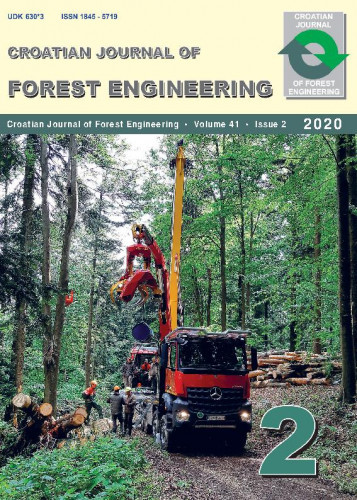Ground-based skidding operations can lead to soil compaction and displacement, which could cause negative effects on forest soil. Hence, some efforts such as forestry best management practices (BMPs) must be implemented in the prone area to mitigate these possible impacts. Several materials and treatments have been adopted to suppress these adverse effects by increasing the ground cover. However, the effects of mulch treatments on runoff and sediment yield are inconclusive with a diverse range of effectiveness. For these reasons, in this research mulch treatments were tested as to determine how the application of organic mulch amendments such as straw and leaf litter and contour-felled logs would alleviate the runoff and sediment yield on machine operating trails and ensure successful hillslope stabilization. The aims of the study were to analyse and compare the effectiveness of leaf litter (LM) and straw mulch (SM) rate and different distances of contour-felled logs (CFL) to mitigate the runoff and sediment yield, and examine the impact of rainfall intensity on effectiveness of litter mulch, straw mulch, and contour-felled logs. Totally, 30 bounded runoff plots in the machine operating trails and four treatments including litter mulch (LMR1: 0.62, LMR2: 1.24, and LMR3: 1.86 kg m-2), straw mulch (SMR1: 0.45, SMR2: 0.92, and SMR3: 1.34 kg m-2), contour-felled logs (CFL10: 10, CFL20: 20, and CFL30: 30 m), and untreated area were established in triplicate with 4 m width and 100 m length. During the study period, the runoff and sediment yield in the untreated trails (U) were 2.36 mm and 11.84 g m-2. Straw (from 41.5 to 60.6%) and litter mulch (from 38.1 to 55.1%), and contour-felled logs treatments (from 70.8 to 88.1%) significantly decreased the runoff, compared to U treatment.
Sažetak

 Croatian journal of forest engineering : 41,2 (2020) : journal for theory and application of forestry engineering / editor-in-chief, glavni urednik Tibor Pentek, Tomislav Poršinsky.
Croatian journal of forest engineering : 41,2 (2020) : journal for theory and application of forestry engineering / editor-in-chief, glavni urednik Tibor Pentek, Tomislav Poršinsky.